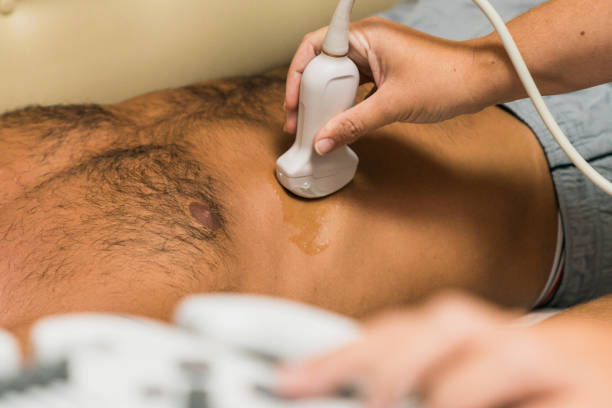
Ultrasounds
Ultrasounds, also known as sonograms, provide a noninvasive, painless way to produce images of systems and structures throughout the body without using radiation.
Because of how gentle they are, ultrasounds likely will take the first pictures a pregnant mom will see of her baby in utero. They are also used to look at tumors, glands, veins, arteries, the heart and other organs.
High-frequency sound waves produce ultrasound images. Sound waves travel from the ultrasound probe through transducer gel and into the body. The ultrasound probe picks up the sound that bounces back from structures in the body and a computer turns the sound waves into an image. Ultrasounds do not produce radiation.
Conditions Evaluated by Ultrasounds
Ultrasounds offer diagnostic information on conditions throughout the body. Your health care provider may order one to examine your:
- Bladder
- Blood vessels to look for blockages and other vascular conditions
- Circulation
- Gallbladder
- Glands – thyroid and parathyroid glands
- Heart and arteries
- Kidneys
- Liver
- Pancreas
- Reproductive organs – Uterus, ovaries, testicles
- Spleen
Because ultrasounds don’t emit radiation, they are used to create images of developing babies in utero and infants’ brains, hips and spines.
Ultrasounds can also guide specialists, like interventional radiologists, in minimally invasive procedures, such as fluid aspiration and a needle biopsy of a breast tumor.
Preparing for an ultrasound
During weekdays, you should receive a call to schedule your ultrasound within 24 hours of your healthcare provider ordering it. In most cases, you will not need to do anything specific to prepare for your ultrasound.
However, for abdominal scans, you will need to avoid eating or drinking anything for six hours before the exam. If you’re a female having a pelvic exam, your scheduler will ask you to drink 32 ounces of water an hour before your ultrasound and not urinate until after the exam. A full bladder makes it easier to see the uterus.
When you arrive at your appointment, our ultrasound technologist will take you to an exam room. For many ultrasound scans, you will not need to put on a hospital gown. The technologist may ask you to shift your clothes to reach the area being studied.
Scans can range from 30 to 90 minutes with most averaging about 45 minutes.
Choosing Spartanburg Regional
We recognize that any scans or tests can be unnerving. Our friendly and attentive ultrasound technologists, who are certified with the American Registry for Diagnostic Medical Sonography, will work to help you feel at ease.
Our ultrasound equipment is state-of-the-art, and we run a robust quality assurance program. Under this program, technologists, providers and physicians all review various studies to assess our techniques and make sure we’re providing the best imaging quality for our patients and doctors.











